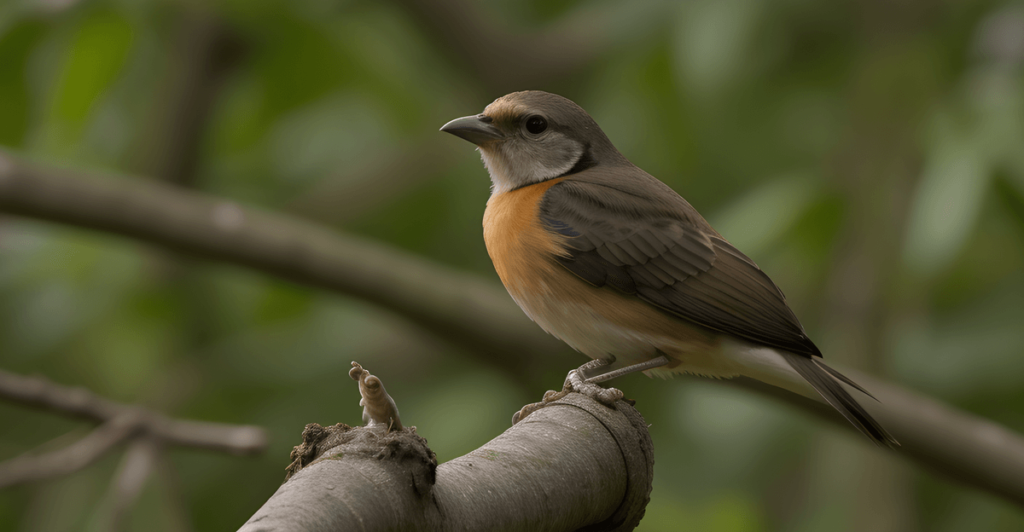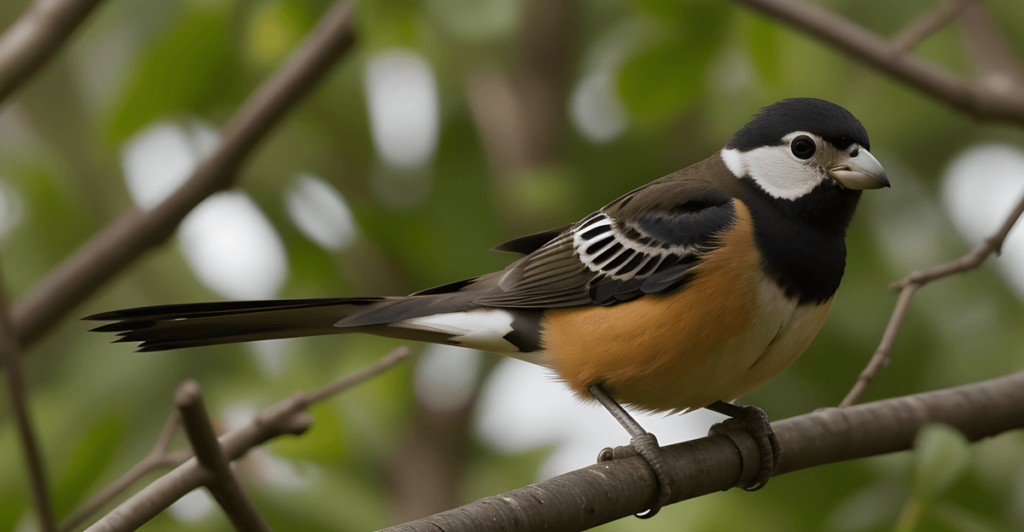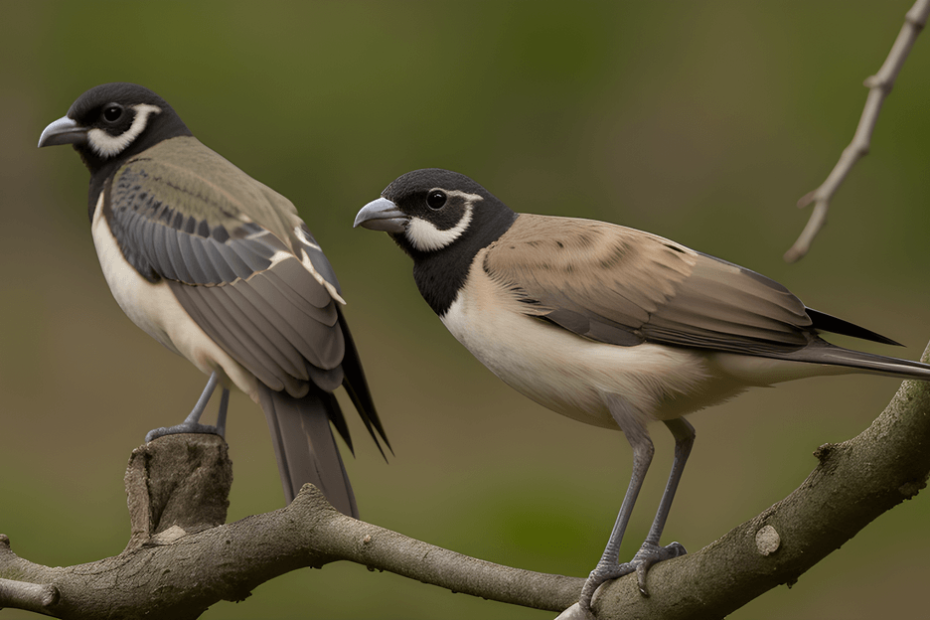Key Takeaways
- Understanding the Bird Reproduction Process, breeding season, young birds, and reproductive organs is essential for bird owners and enthusiasts to provide appropriate care and support for their avian pets.
- Knowing the Anatomy of Male and Female Birds helps in recognizing signs of reproductive health issues, and understanding the breeding behavior, and sex of different bird species.
- Mating Behavior and Courtship in Birds offer insights into the fascinating and diverse ways in which birds form pair bonds, reproduce, and engage in sex.
- The Role of the Cloaca in Bird Reproduction highlights the unique biological aspects of avian reproduction, emphasizing the importance of this organ in the process.
- Nesting Rituals, mating displays, and breeding season shed light on the natural behaviors of birds and can guide bird owners in creating suitable nesting environments for their pets.
- Egg-Laying and Breeding Cycles of Birds provide valuable information for bird breeders and caretakers, aiding in the proper management of breeding pairs and their offspring.
Introduction
I’ve always been fascinated by the marvel of bird mating. From the intricate courtship rituals and mating displays to the unique nesting habits, birds have an extraordinary way of bringing new life into the world. In this post, we’ll delve into the captivating world of wild bird reproduction and explore its fascinating intricacies.
Birds have evolved a variety of reproductive strategies to ensure their offspring’s survival in diverse environments. Understanding these methods sheds light on how different bird species adapt and thrive in their habitats. Join me as we uncover the secrets behind egg-laying, mating behaviors, and parental care among our feathered friends.
Understanding the Bird Reproduction Process
Internal Fertilization
Birds reproduce through internal fertilization, where the male bird’s sperm fertilizes the female bird’s egg inside her body. This process occurs during copulation, where the male transfers sperm to the female’s reproductive tract. Once inside, the sperm meets with an ovum or egg and fertilizes it.
This method of reproduction enables birds to produce offspring that are well-developed and ready for survival once hatched. Unlike external fertilization found in some fish and amphibians, internal fertilization provides a more secure environment for embryo development within the mother bird.
Formation of Gametes
The reproductive process in birds involves the formation of gametes, which are sex cells necessary for reproduction. In females, this includes ova or eggs produced by their ovaries. Meanwhile, males generate sperm from their testes. These gametes carry genetic material and unite during fertilization to create a new organism.
The production of these specialized cells is crucial for successful breeding among birds. It ensures genetic diversity within populations and contributes to species’ adaptation to changing environments over time.

Hormonal Changes
Understanding hormonal changes that trigger bird reproduction is essential for comprehending their breeding behaviors. Birds experience hormonal fluctuations influenced by factors such as daylight length, temperature changes, food availability, and social interactions within their environment. These hormonal shifts play a significant role in stimulating courtship behaviors, nest-building activities, egg-laying processes in females,
Personal Experience: I remember learning about how different environmental factors can influence hormonal changes in birds during my biology class last semester. It was fascinating to understand how intricate these mechanisms are and how they impact various aspects of avian life cycles.
Learning about these fundamental aspects of bird reproduction sheds light on the complexity behind this natural phenomenon. From internal fertilization to hormone-driven behaviors influencing mating rituals—each stage plays a vital role in ensuring avian species‘ continuity.
Anatomy of Male and Female Birds
Reproductive Anatomy Differences
Male and female birds have distinct reproductive anatomies. The male bird’s reproductive system includes testes, which produce sperm, while the female bird has ovaries that develop eggs. Unlike mammals, birds do not have external genitalia or a penis.
The male bird’s reproductive tract consists of the testes, vas deferens, cloaca, and accessory glands. In contrast, the female bird’s reproductive system comprises the ovary, oviduct (infundibulum, magnum, isthmus), uterus (shell gland), vagina, and cloaca.
I find it fascinating how male birds lack a copulatory organ like a penis. Instead of internal fertilization through mating as seen in mammals and some reptiles such as snakes or lizards with hemipenes; birds rely on their unique cloacal kiss – bringing their cloacas together for sperm transfer during copulation.
Unique Features
The male bird possesses testes located internally near the backbone to generate sperm cells. During mating season or breeding times when testosterone levels rise significantly in males due to photoperiodism (day length), these organs enlarge to accommodate increased sperm production for reproduction.
On the other hand, female birds are equipped with an ovary that produces eggs continuously during breeding seasons. As an egg passes through each section of her oviduct – the infundibulum where fertilization occurs if there is any; the magnum where albumen forms around it; isthmus responsible for adding shell membranes; the uterus or shell gland where calcium carbonate is deposited onto it forming its hard shell before laying.
It’s interesting how certain species exhibit sexual dimorphism in their reproductive anatomy – physical differences between males and females beyond just their sex organs such as size differences in gonads or specialized structures like brood patches on females’ skin used for incubating eggs by transferring heat from her body.
Specialized Reproductive Organs
In addition to producing eggs, female birds possess specialized structures within their reproductive tracts that aid in forming complete embryos inside protective shells before they are laid. These include unique adaptations such as cryptic coloration found on some species’ eggs serving as camouflage against predators when nesting on open ground.
Moreover,male birds also have accessory glands associated with their reproductive systems that contribute fluids rich in nutrients and proteins vital for successful fertilization upon ejaculation into the female’s cloaca during mating.
Mating Behavior and Courtship in Birds
Significance of Courtship Behavior
Bird mating involves a series of behaviors known as courtship, which is crucial for reproduction. The significance of courtship behavior lies in the establishment of strong pair bonds between mates. This bond is essential for the successful nesting, incubation, and rearing of offspring. Through courtship rituals, birds communicate their readiness to mate and assess potential partners.
Courtship also allows birds to demonstrate their fitness as potential mates. For example, male birds may perform elaborate mating displays, showcasing their physical prowess or vibrant plumage to attract females. These displays serve as an indicator of good health and genetic quality, influencing mate selection.

Role of Vocalizations and Displays
Vocalizations play a vital role in bird courtship by conveying messages related to mating readiness, territorial boundaries, and attraction to potential mates. Male birds often use complex songs or calls to establish territories and attract females during the breeding season. Visual displays such as aerial acrobatics or intricate dances further enhance the communication between potential mates.
In some species, both male and female birds engage in synchronized movements or duets that strengthen their bond before copulation occurs. These coordinated acts not only signify compatibility but also reinforce the pair’s commitment to each other.
Factors Influencing Mate Selection
Mate selection among bird species is influenced by various factors such as physical attributes, environmental conditions, and social dynamics within a population. For instance, certain bird species exhibit seasonal mating patterns where specific environmental cues trigger reproductive behaviors.
The availability of suitable nesting sites can also influence mate selection since both males and females seek partners capable of contributing to successful nest building and care for offspring. In some cases, long-term pair bonding ensures shared responsibilities during incubation and feeding young chicks.
Personal Information: I’ve always been fascinated by the diverse courtship behaviors exhibited by different bird species around my neighborhood during springtime. Observing their unique vocalizations and mesmerizing displays has given me a deeper appreciation for the complexities involved in avian reproduction.
Understanding these aspects provides valuable insights into how wild birds form lasting partnerships based on mutual cooperation rather than mere instinctual behavior.
The Role of the Cloaca in Bird Reproduction
Vital Function
The cloaca plays a vital role in bird reproduction, serving as the all-in-one chamber for waste elimination and reproductive functions. This single opening is where the digestive, urinary, and reproductive systems meet. It’s essentially a multi-purpose organ that ensures efficient reproduction and waste removal.
In birds, the cloaca facilitates copulation through a behavior known as the “cloacal kiss.” During this process, male and female birds briefly press their cloacas together to transfer sperm from the male to the female. This direct contact allows for successful fertilization during avian reproduction.
I find it fascinating how such a small anatomical feature like the cloaca can be so crucial for avian species’ continuation. It’s amazing how nature has designed this unique system to ensure effective mating and egg-laying processes in birds.
Dual Purpose
One of the most intriguing aspects of the cloaca is its dual purpose. Not only does it play a key role in bird reproduction by facilitating copulation and egg-laying, but it also serves as an essential organ for waste elimination. While ensuring successful mating and fertilization, this multifunctional chamber also expels metabolic wastes from the body.
The presence of a single opening for both excretory and reproductive functions may seem unusual compared to mammals’ separate systems; however, it’s an incredibly efficient design that suits birds’ lightweight physiology perfectly. This adaptation helps reduce weight while still maintaining essential bodily functions necessary for survival.
Birds have truly evolved remarkable adaptations to thrive in their environments. The integration of reproductive processes with waste elimination within one organ showcases nature’s efficiency at its finest.
Nesting Rituals and Their Significance
Diverse Nesting Behaviors
Bird species exhibit diverse nesting behaviors. Some birds build intricate nests using twigs, leaves, and mud, while others lay their eggs in simple scrapes on the ground or in tree cavities. The diversity of nesting habits is influenced by factors such as habitat, diet, and predators.
Different bird species have unique methods for selecting a suitable nesting site. For instance, the American robin constructs cup-shaped nests made of grass and mud in trees or shrubs. In contrast, penguins build nests with stones on rocky beaches to keep their eggs off the cold ground.
Importance of Nest Building
The act of nest building is crucial for successful reproduction among birds. A well-constructed nest provides a safe environment for incubating eggs and raising offspring. It shields the eggs from adverse weather conditions and predators while offering insulation against temperature extremes.
Nest building also serves as a means for female birds to assess potential mates based on their ability to gather materials and construct sturdy nests. This process plays a significant role in mate selection by demonstrating the male’s genetic fitness and provisioning abilities.
Protection Against Predators
Nesting rituals are essential for protecting eggs and offspring from predators. Birds often employ various strategies to safeguard their young ones during this vulnerable stage of life. Incubating parents may use camouflage to conceal themselves while sitting on their eggs or rely on distraction displays to lure predators away from the nest.
Some bird species choose nesting sites that are challenging for predators to access, such as cliff ledges or dense vegetation. Others form large colonies where communal defense mechanisms help deter potential threats through collective vigilance.
In my experience observing local bird populations, I’ve noticed how different species showcase remarkable diversity in their nesting behaviors. For example, I’ve seen robins diligently collecting grass strands one at a time while constructing their cup-shaped nests high up in our backyard trees.
Egg-Laying and Breeding Cycles of Birds
The Process
Birds reproduce by laying eggs, a process that begins within the female bird’s reproductive system. When an egg is formed, it moves through the oviduct where it receives its shell and other protective layers. Once fully developed, the egg is laid by the female bird.
The egg-laying process starts with sperm from the male fertilizing an egg inside the female. This fertilized egg then goes through a series of changes as it travels down the oviduct before being laid.
Understanding how eggs are formed in birds provides insight into their unique reproductive biology. It’s fascinating to learn about this intricate process that allows birds to continue their species.
Factors Influencing Timing
Several factors influence when and how often birds lay eggs. These include environmental cues such as temperature, food availability, and daylight length. These factors can affect both individual birds’ behavior and entire populations of certain species.
The timing of breeding cycles also varies among different bird species based on these environmental influences. For example, some birds may breed during specific seasons or times of year when resources are more abundant.
Personal Information: As someone interested in observing nature, I’ve noticed how certain bird species tend to lay eggs at particular times of year coinciding with seasonal changes in my area.
Breeding Cycles
Understanding avian reproduction involves grasping breeding cycles and seasonal variations in reproduction patterns among different bird species. Some birds have specific mating rituals or behaviors they exhibit during the breeding season to attract mates or establish territories for nesting.
Different types of birds have distinct breeding cycles based on their natural history and ecological adaptations to survive in various environments around the world.

Caring for Newborn Birds and Their Health
Parental Care Behaviors
Young birds rely heavily on their parents for feeding, warmth, and protection. Adult birds exhibit various parental care behaviors towards their hatchlings, such as providing food, building nests, and defending the nest from predators. This nurturing behavior is crucial for the survival of newborn birds.
Birds like doves and pigeons produce a special substance called “pigeon milk” in their crops to feed their young ones. This unique form of feeding demonstrates the extraordinary lengths to which adult birds go to ensure the well-being of their offspring.
Ensuring Newborn Bird Health
The role of feeding, warmth, and protection is paramount in ensuring the health of newborn birds. Adequate nourishment through regurgitated food or specialized diets tailored to each species’ needs is essential for proper growth and development. Maintaining an optimal temperature within the nest or brooding area helps safeguard against hypothermia.
Furthermore, adult birds provide protective care by shielding their hatchlings from adverse weather conditions and potential threats posed by other animals. Understanding these critical aspects allows bird owners to mimic natural conditions when caring for pet birds at home.
I’ve found that creating a warm environment with appropriate bedding material can significantly contribute to the well-being of pet birds during the early stages of life.
Vulnerability and Survival Strategies
Understanding the vulnerability of young birds is crucial in implementing strategies for survival. Newly hatched chicks are particularly susceptible to diseases due to underdeveloped immune systems. Therefore, maintaining a clean environment around nesting areas is vital in preventing infections.
Moreover, fledgling birds often require guidance from their parents as they learn essential skills such as flying and finding food independently. These learning processes are integral parts of a young bird’s journey toward self-sufficiency.
Evolutionary Aspects of Bird Reproduction
Avian Reproductive Strategies
Birds have evolved various reproductive strategies to ensure the survival and proliferation of their species. These strategies include diverse mating systems, such as monogamy, polygyny, and polyandry. For instance, some bird species exhibit elaborate courtship rituals to attract mates and establish pair bonds. Others engage in cooperative breeding where multiple individuals help raise offspring.
Understanding these reproductive strategies can provide insight into how different bird species have adapted to their environments over time. For example, ground-nesting birds may lay a larger number of eggs to compensate for higher predation rates. In contrast, tree-dwelling birds may invest more parental care into fewer offspring due to reduced predation risk.
Influence of Environmental Factors
Environmental factors play a crucial role in shaping the evolution of bird reproduction. The availability of resources such as food and nesting sites directly impacts reproductive success. Climatic conditions influence breeding seasons and migratory patterns among avian species.
For instance, in temperate regions with distinct seasons, birds synchronize their reproductive efforts with peak food availability to maximize chick survival. Furthermore, environmental changes driven by human activities can significantly impact bird reproduction. Habitat destruction and pollution can disrupt nesting sites and reduce food sources essential for successful breeding.
I find it fascinating how environmental factors contribute to the diversity of avian reproductive behaviors across different habitats worldwide.
Natural Selection and Bird Reproductive Traits
Natural selection plays a pivotal role in shaping various reproductive traits observed in birds today. Traits that enhance mating success or increase offspring survival are favored by natural selection over time.
For example:
- Elaborate plumage colors or intricate songs often serve as signals for mate attraction.
- Specialized reproductive organs enable efficient fertilization.
- Nesting behaviors that minimize egg predation contribute to greater reproductive success.
These examples demonstrate how natural selection has sculpted an array of unique adaptations related to bird reproduction based on selective pressures within specific ecological niches.
Summary
Understanding the intricacies of bird reproduction has given me a newfound appreciation for the marvels of nature. From the fascinating mating behaviors to the delicate nesting rituals, every aspect reflects the remarkable adaptations that have evolved over time. The role of the cloaca in bird reproduction and the care provided to newborn birds highlight the resilience and dedication ingrained in avian species. Exploring these topics has deepened my understanding of how life perpetuates itself in the avian world, showcasing the beauty of creation.
As we continue to unravel the mysteries of bird reproduction, let’s take a moment to observe and cherish the natural world around us. Whether it’s watching birds build their nests or witnessing their breeding cycles, there is always something awe-inspiring to discover. Let’s embrace the opportunity to learn from these incredible creatures and strive to preserve and protect their habitats for generations to come.
